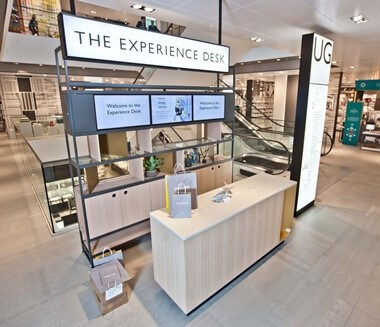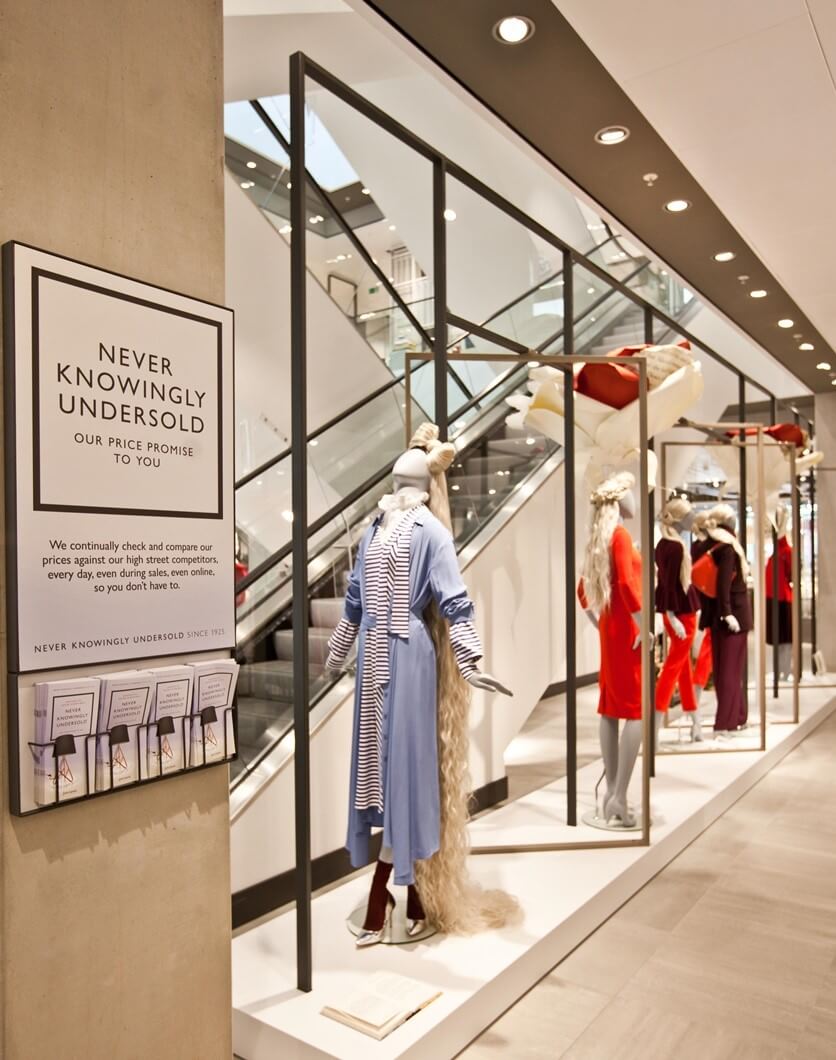“The high street is dead”, “the department store is dead”. We’re hearing it over and over, and yet stores still form the cornerstone of brand experience, for the majority of successful omnichannel retailers. There’s still a strong customer demand for store experiences – over 70% of all retail purchases touch a store at some point in the journey.
Industry stalwart John Lewis unveiled its newest store last week at Oxford Westgate. It’s the 49th in the John Lewis portfolio, an anchor store of the future, and its most experience and service-led to date.

Being dubbed the “Store of the 21st Century” by Drapers, the new store centres on providing exceptional experience and service, in order to engage and retain loyal customers.
There are five “dwell” spaces throughout the store, to host “customer experience events” for John Lewis shoppers. These range from traditional personal styling sessions, to modern yoga classes capitalising on the athleisure trend. The new “Experience Desk” is perhaps the culmination of this thinking, where shoppers can buy-in to experiences at a concierge style service, to help the customer arrange and organise their day around their product needs.
One thing is for sure – John Lewis’ store experience is attempting to give the customer exactly what they want from the brand.

“Never knowingly undersold” is perhaps the most famous brand promise in British retailing.
John Lewis operates under banners of quality and customer reassurance. One of the biggest bugbears for customers is the non-fulfilment of the customer promise.
If you promise that an item is in stock, for example, can you ensure that it reaches the customer? This relies on multiple elements – is your stock view in real-time? Is it a central, single view, or do you have ring-fenced stock? Opening up your inventory with a single, centralised view is the best way to ensure you can fulfil the customer promise with accurate stock information.
Consumers are also more demanding: if they need a product “now”, they’ll be put off by out-of-stock notifications, or “wait 2-3 weeks for delivery”. Are you using surplus store stock to fulfil online orders? Ship from store can make you more likely to be able to fulfil more orders, whilst also increasing full price sell through.
What we don’t believe is that the store of the future should become a glorified click-and-collect desk.
The store is still the manifestation of your brand in its physical products. So, how to get it right? Make sure they are in the right place, at the right time, in the correct quantities, and sold by store associates with the best levels of product information is key.
John Lewis might have based its new store around experiences as well as its products, but their value lies in the encouragement of brand loyalty, bigger baskets, and future purchases.
We think you might like these posts too
© 2025 Retail Assist Limited. The Hub Floor 5A, 40 Friar Lane, Nottingham, NG1 6DQ.
Registered in England. Company number: 03790674
info@retail-assist.com | +44 (0)115 904 2777
Website Designed & Built by we are CODA